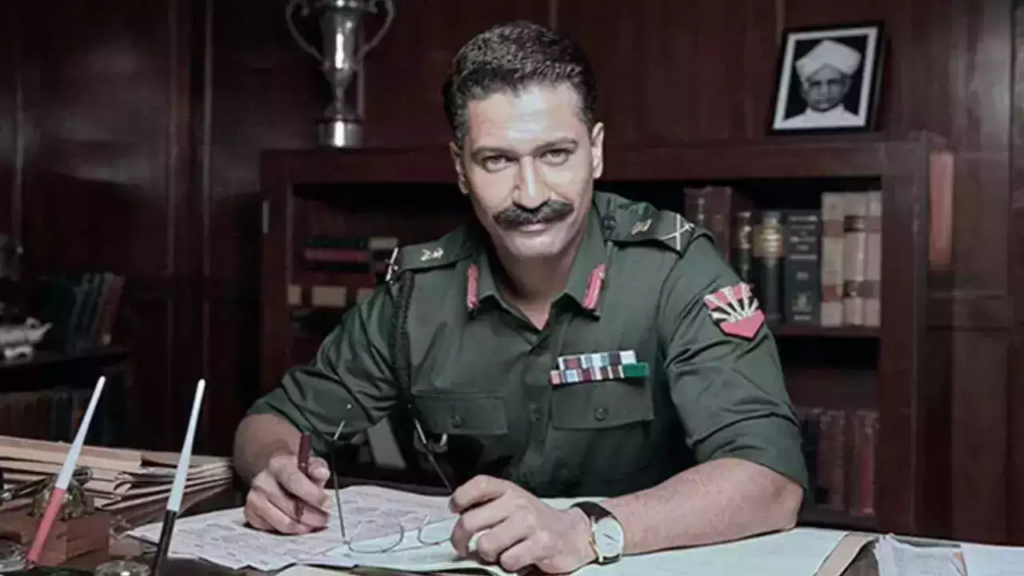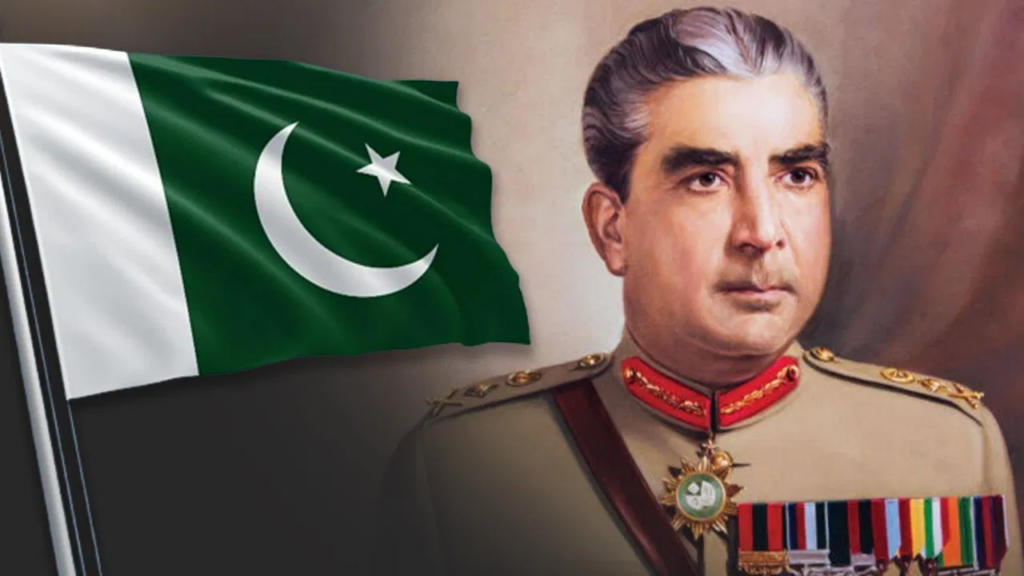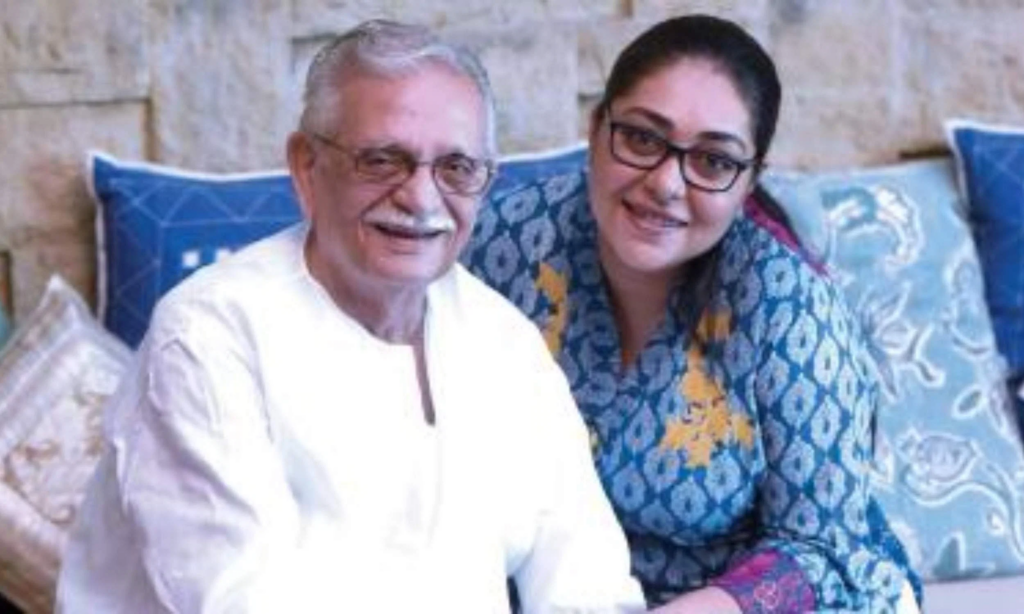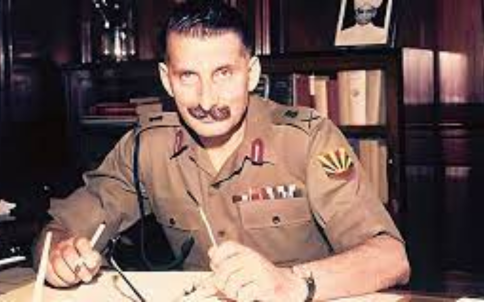Musings by Shekhar Nambiar
Sam Bahadur ought to have been a journey down memory lane. All that the film does instead is revisit the subcontinent’s history sketchily, from pre-Partition India, Pakistani-sponsored intruders in Kashmir, aggression by the Chinese, the emergence of Indira Gandhi on the centre-stage of Indian politics, and how she was instrumental in getting Pakistan dismembered in 1971.
Vicky Kaushal as Manekshaw just about manages the gait and mannerism of the great military man. The moustache aside, the portrayal ends there.

Vicky Kaushal as Manekshaw just about manages the gait and mannerism of the great military man.
Nostalgic journey
To watch the movie on December 16, 52 years to the surrender by Pakistan in Dhaka after fighting ended in East Pakistan, was no doubt emotional and filled with nostalgia of the times gone by.
Also read: Xi’s optics, Thanksgiving, cricket
Air raid sirens sounded in cities and towns across north India, including in the nation’s capital Delhi, as fighting broke out on December 3, 1971 following attacks on Indian air bases. This was the precise date of the outbreak of war that Manekshaw had told the Prime Minister earlier.

Manekshaw meets Indira Gandhi: the real and the reel show
The preparations for the war and mobilization of troops are sketchy. Gulzar could have shown troop movements from cantonments. Ahead of the 1971 war, there was a huge mobilization from cantonments across India, in the south, east and the north.
That Friday marked the beginning of a full-scale war with Pakistan, the third since the Independence of the feuding neighbours, and the bloodiest and most decisive.

A period classic the film is certainly not. Directed by Meghna Gulzar of Talwar and Raazi fame, it leaves several historical aspects to the imagination of the viewer, which is where it fails.
Infiltrators in Kashmir
Kashmir’s ruler Hari Singh, angry at the delayed arrival of the delegation from Delhi comprising VP Menon and Manekshaw among others, signed the document of accession of Kashmir to India even as infiltrators were at the doorstep of Srinagar.
Also read: Lessons still to learn
Pakistan had pushed in Pashtun militia among non-regulars, in addition to the Frontier Scouts and other newly acquired regiments by it following the partition of India, into the Valley forcefully occupying large chunks of land that they have, to this day, not withdrawn from.

Yahya Khan, the military dictator of Pakistan
Yahya the dictator
As the film progresses emerges the dictator Yahya Khan, who had been Manekshaw’s batch mate in the academy. Known to have been a heavy drinker, at least in the film, by the time of the crisis in East Pakistan, he becomes a full-blown drunk. His administration adopted all sorts of means to browbeat India. He is seen dictating a letter to the then US President Richard Nixon, who sided with the Pakistan government during the 13-day war. Was the Seventh Fleet’s presence near the Bay of Bengal a result of Yahya’s SOS or was it just a redeployment from off South Vietnam in anticipation of an Indian offensive into West Pakistan? A senior US Navy officer, who was a young navy man on the USS Enterprise as part of the Seventh Fleet, once told me that it was never their intention to intervene in the conflict. Be that as it may, the fleet’s presence did lead to a hue and cry among the Indian political establishment then.
Yahya owed Manekshaw money after he bought his motorcycle. That debt was never repaid.

Pakistani General Niazi signing the instrument of surrender
A documentary footage of Yahya’s Foreign Minister Bhutto giving a fiery speech at the United Nations makes mockery of all attempts to broker a peace by parties to stop hostilities.
Patchy coverage
The film’s coverage of this tumultuous period in India’s history, given that Sam Manekshaw saw action during all those years, is somewhat patchy. As with most previous Bollywood attempts at adaptations of history, this film too fails.
For one, it is sketchy and lacking in detail. There are exceptions, though. The grievous injury sustained by Manekshaw – some nine bullets penetrating his body and of his bold recovery – are brilliantly done from a cinematic sense.
Also read: Our magnificent men in blue
Technically, the shots of the foray into Burma are flawless, and is reminiscent of the 1957 David Lean directed ‘The Bridge on the River Kwai’. The much acclaimed and dramatized film on the Thai-Burma railway had Sir Alec Guinness in the lead role as Colonel Nicholson entrusted to build a bridge on the Kwai. Sir Alec had several greats to his credit, among them ‘Oliver Twist’, ‘Great Expectations’, ‘Lawrence of Arabia’, ‘Dr Zhivago’ and ‘A Passage to India’.
Indira Gandhi & Sam
Sam Bahadur’s script adds some melodrama, depicting Indira Gandhi as being in awe of the charming military man.
The liberation of Bangladesh, the credit for which must go to Prime Minister Gandhi and to Manekshaw for his military leadership, is treated somewhat amateurishly.

The then defence minister Jagjivan ram, Manekshaw, Indira Gandhi and another official
Mukti Bahini
Indira Gandhi’s decision on a covert operation against Pakistan by training Bangla freedom fighters – Mukti Bahini – are, if not completely ignored, shown perfunctorily.
Indira Gandhi receiving Muzib
The fate of Yahya who resigned from his position in disgrace and appointed Bhutto, then in New York at the Security Council, as the Chief Martial Law Administrator, finds no place in the film.
Sheikh Mujibur Rahman’s image is flashed in one or more frames without much mention of his return to his country after being released from prison in Pakistan. Gulzar could have interspersed the documentary footage available of the Bangabandhu’s return to Dhaka via London and Delhi and the rousing reception he got in the Indian capital. Footage is available, in particular, of his cavalcade going up Raisina Hill to Rashtrapati Bhawan to cheering crowds lining the avenue.
Also read: Hard work, tenacity pays
India’s decision to embark on a full-scale offensive was the result of Pakistan’s crackdown on civilians, students and intellectuals, who were protesting for greater autonomy. There is a dramatic scene of the unprovoked firing by the Pakistan military at the Dhaka University campus. Estimates say millions of innocent civilians died in the genocide unleashed by the Pakistani military on March 25 that lasted nine months. Some 10 million people fled to India seeking refuge from the genocide. After the ceasefire and Pakistani surrender, around 93,000 Pak POWs found their way to camps across India in comfortable conditions, where India observed all Geneva Convention norms. It is said Indira Gandhi chose for the early return of the POWs lest any harm came to Mujibur Rehman languishing in a Pakistani prison.

Legendary lyricist-director Gulzar and his only daughter-director Meghna Gulzar
Meghna Gulzar perhaps gives a wide berth to facts to avoid any controversial messages but surely the film could have covered history and facts in greater detail. Perhaps the film seeks to open the window to young Indians a slice of history that they have not read or heard of before.
Tailpiece
I cannot but end without narrating my meeting the Field Marshall a couple of years before his passing away. My son, then a boy in middle school, and I came face to face with the legend in a shoe store. I went up to him not knowing what to expect, and to my surprise, he responded to my greetings and said some very nice things to my boy. On my part, with some difficulty – overcome as I was with emotion – I told him how people of my generation remembered his contributions at a difficult time of the nation’s history. He just said that was such a long time ago, humility personified, which I now know was the way he was. Those were days of the early cell phones, so we missed clicking a photo with the hero of our times.
Also read: Yeh dil mange more





[…] Also read: A Review of an Era […]